For hundreds of years, cast iron Dutch Oven have set the standard for utility, durability, even cooking and taste. In my own kitchen, I find so much comfort in using the very pans my great-grandmother used to feed her family, to feed my family today. Their durability is unquestionable as is the undeniable fact that when properly taken care of, they only get better with age.
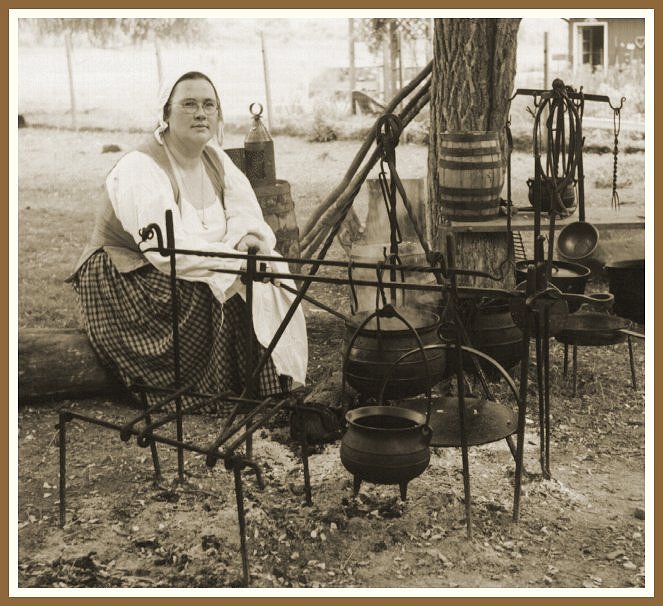
In 1704 a man by the name of Abraham Darby traveled from England to Holland to inspect a Dutch casting process by which brass vessels were cast in dry sand molds. Upon returning to England Darby experimented with the process and eventually patented a casting process using a better type of molding sand as well as a process of baking the mold to improve casting smoothness. Darby eventually began casting pots and shipping them to the new colonies and throughout the world. The name “Dutch Oven” may have derived from the original Dutch process for casting metal pots. Others have suggested that early Dutch traders or salesmen peddling cast iron pots may have given rise to the name “Dutch Oven”.
To this day the name “Dutch Oven” is applied to various cast pots or kettles. The most common application of the name is to a cast iron pot or kettle with a flat bottom having three legs to hold the oven above the coals, flat sides and a flat, flanged lid for holding coals. These ovens have a steel bail handle attached to “ears” on each side of the oven near the top for carrying.
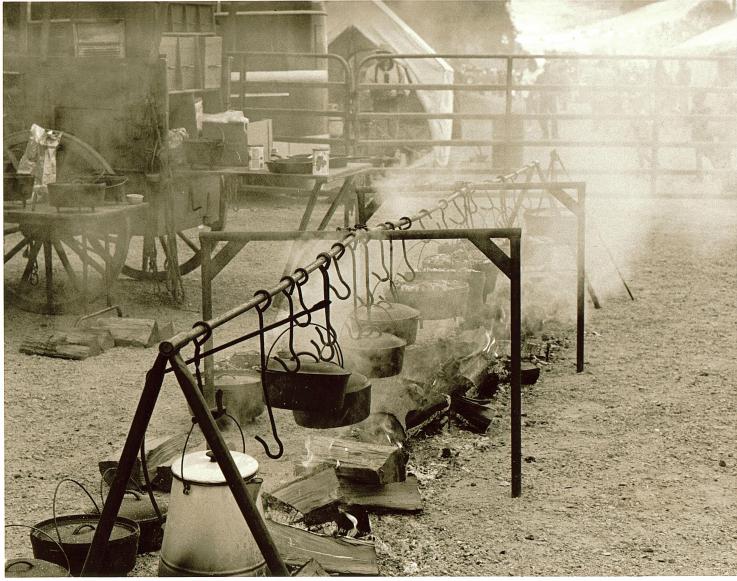
Lodge Manufacturing Company which make the majority of Dutch Ovens being sold today, distinguished the two types of ovens by calling the rounded top, flat bottom oven with no legs, a Dutch Oven. The oven with a flat lid with a lip around the edge and a flat bottom with three legs they call a “Camp Oven”.
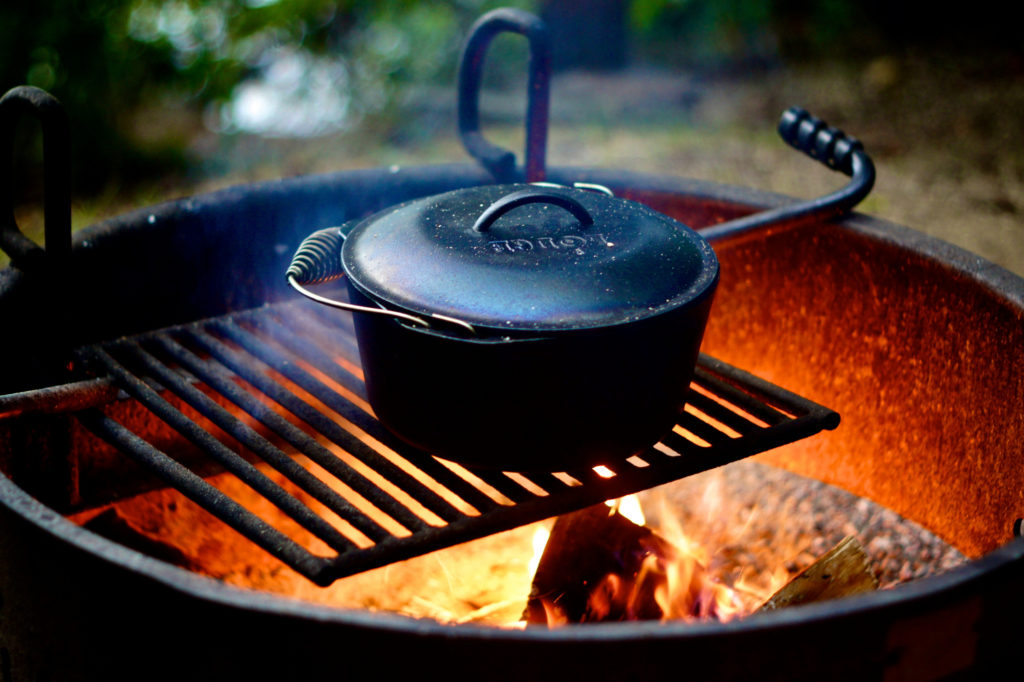
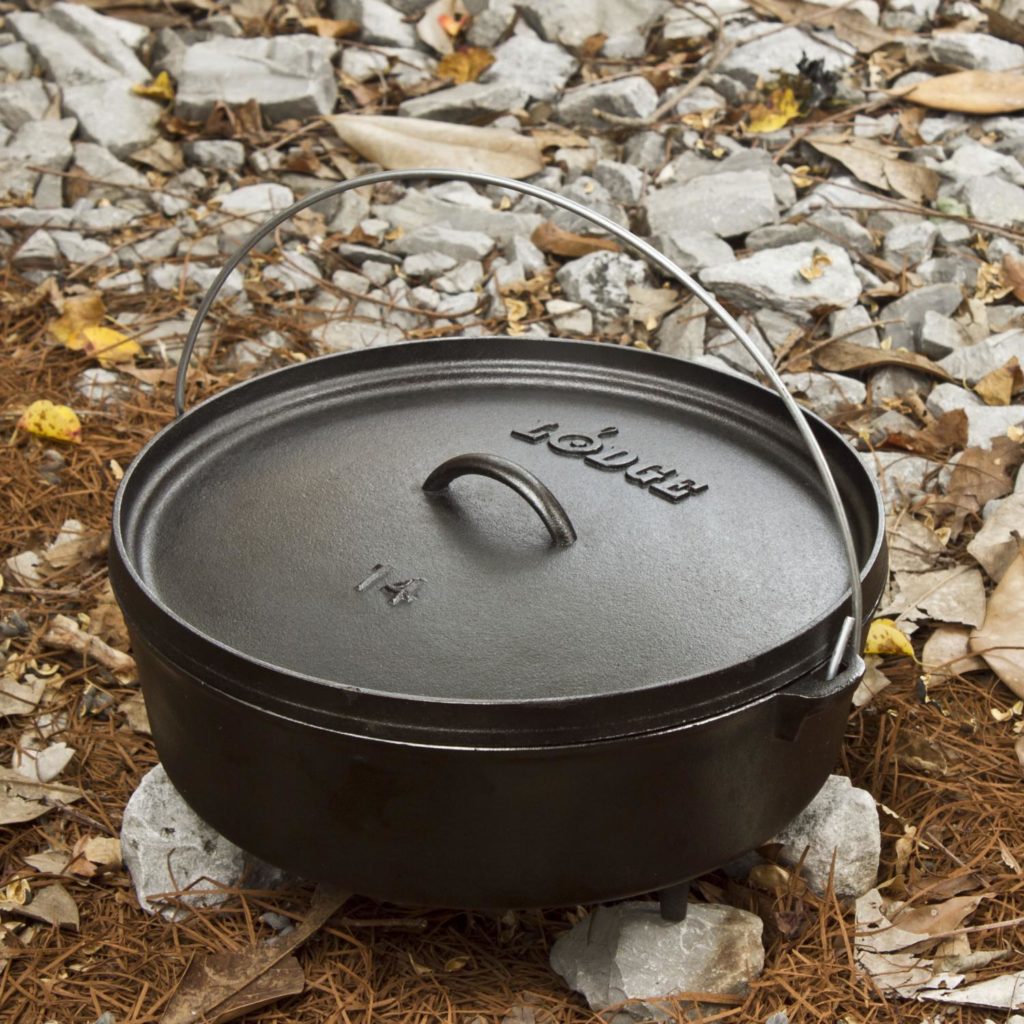
Cast metal pots have been in use since the seventh century. The Dutch Oven of today has evolved over the years as various manufacturers made refinements and improvements over previous version of cast metal pots.
No matter what you call it or what shape it is cast to, a well prepared meal from a Dutch Oven has a delicious flavor unmatched by most other cookware. And so it goes, today, one of the best preparedness items you can buy is a cast iron camp oven.
Curing a Dutch Oven
Once you have an oven, it must be cured. This process will keep your oven from rusting and produce an interior coating that will prevent food from sticking. The process is very simple. If you have an old rusty oven, scrub it well and use a fine-grade sandpaper to clean up and expose the entire surface, inside and out. Once the metal is exposed—or if you are curing a new oven—wash the entire oven well with hot soapy water. This will remove the waxy coating from a new oven and the fine metal dust remaining in an old reconditioned one.
Next, heat your Dutch oven, with the lid on, to about 200° in the oven in your home. (You can also do this in a fire, with coals or briquettes.) While the oven is hot, pour or drop in a small amount of oil, shortening, or lard, and while wearing oven mitts or heavy leather gloves, use a clean cotton cloth to wipe the entire surface well, inside and out, to coat it with the shortening, oil, or lard. When the oven is coated, heat it to 350° for an hour. If you do this in your house, expect some smoke. After an hour of heating, let the oven cool slowly. Force-cooling a cast iron oven by putting it in a freezer, snow bank, or outside during a cold rain, can crack or warp it.
Season Cast Iron Correctly
Once you have your oven cured, it is ready for cooking. However, after each subsequent use and cleaning, you maintain and strengthen the cure by wiping a very light coat of oil, shortening, or lard over the dry, warm oven.
The proper cleaning of a Dutch oven is a favorite topic of many cast iron cooks. Some say that excess food must be burned off by turning the oven over in a fire, or by putting the lid on and heating the oven until the food residue inside is burned to a black crust or dust (like a self-cleaning household oven). Others claim it is a mortal sin to use any kind of soap when cleaning Dutch ovens. All, however, agree that you never scrape or scour a Dutch oven. Using metal utensils or wire scrubbers or brushes can remove the curing and allow food to stick in the exposed areas unless the oven is re-cured.
Learn To Regulate The Heat
A critical component to successful cooking is regulating the oven’s heat. This will vary widely, depending on your elevation, humidity in the air, outside temperature, etc. You’ll just have to experiment. Start with charcoal – a ballpark figure is that each lighted briquette will contribute about 25 degrees.
A general formula that works for me is this: Take the diameter of the oven, say 10 inches. Multiply the diameter times two. That means use 20 coals. Take two from the bottom and put on the top. That should give you about 350 degrees. This same formula works on bigger and smaller ovens.
Heat will vary, depending on how long the charcoal has been lighted, and the quality of it. At hunting camp, we’ll use coals from the campfire. Open the lid every once in a while to check on the progress.
Get Good Cast Iron
Get good cast iron: Cast iron is an investment. I still use a skillet my grandmother inherited from her mother fifty years ago. I use my deep dish chicken fryer at least weekly. When properly taken care of, good cast iron can last for generations!
Some of cheap imported cast iron is unevenly cast, making for hot and cold spots when cooking or baking. The lids might not fit well, and cause a problem getting a good seal. Not to mention, some of the imported utensils may use iron that is highly suspect.
If you stick with it, you’ll eventually go to premium cast iron anyway. You might as well get it sooner rather than later. Get Lodge or Camp Chef brand cast iron, and you’ll never regret the investment.

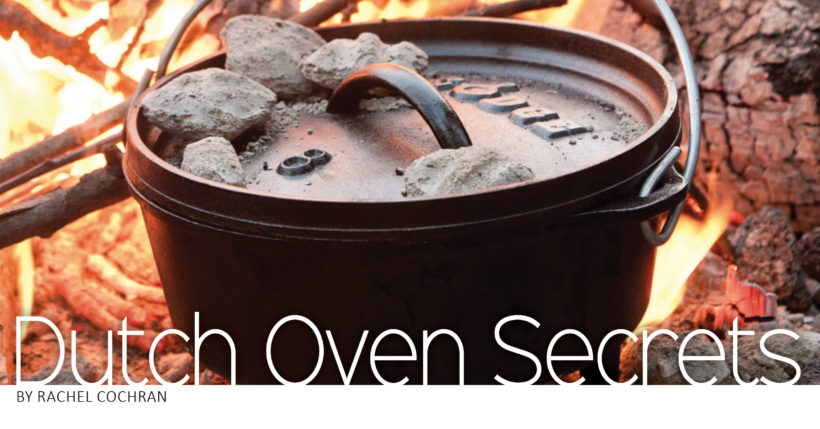
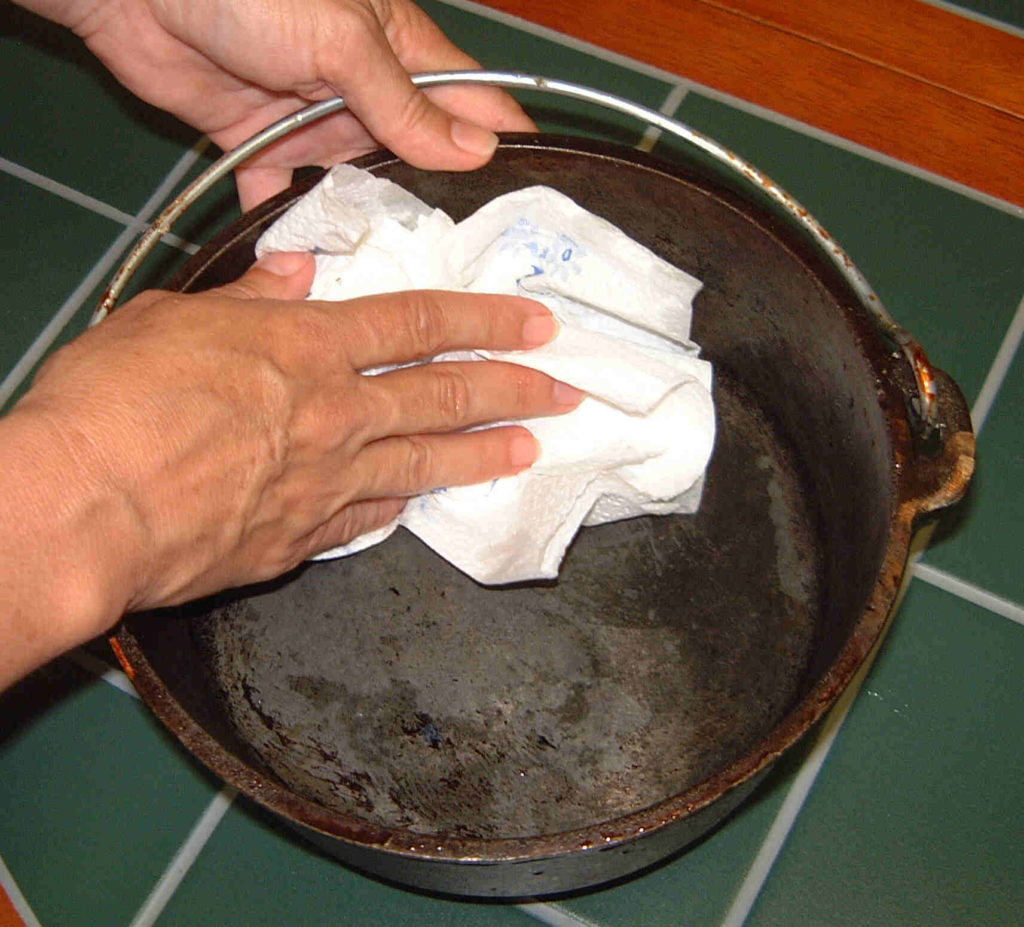
Goood replies iin return off this query with genuine arguments and explaining everything
regarding that.
Like!! Thank you for publishing this awesome article.
We’re a group of volunteers and startinbg a new scheme in our community.
Your site provided us with vakuable information to work on.
Youu hqve done an impressive job and our whole
community will be gratevul too you.
Excellent post. I was checking constantly this blog and I am impressed! Extremely useful info particularly the last part 🙂 I care for such information much. I was seeking this certain information for a very long time. Thank you and best of luck.|
It is in reality a great and useful piece of info. Thanks for sharing. 🙂
Thanks for one’s marvelous posting! I seriously enjoyed reading it, you can be a great author.I will always bookmark your blog and will often come back someday. I want to encourage yourself to continue your great job, have a nice weekend!
I like what you guys are up also. Such intelligent work and reporting! Carry on the excellent works guys I’ve incorporated you guys to my blogroll. I think it’ll improve the value of my web site 🙂
Undeniably imagine that which you said. Your favorite justification seemed to be at the net the simplest thing to be aware of. I say to you, I certainly get irked even as other folks consider worries that they plainly don’t realize about. You controlled to hit the nail upon the top and also defined out the entire thing without having side effect , people could take a signal. Will likely be back to get more. Thanks
wonderful put up, very informative. I’m wondering why the opposite experts of this sector do not realize this. You should proceed your writing. I am sure, you’ve a huge readers’ base already!
Great website you got here! Yoo man great reads, post some more! Im gon come back so better have updated
Good day! This is kind of off topic but I need some help from an established blog. Is it very hard to set up your own blog? I’m not very techincal but I can figure things out pretty quick. I’m thinking about setting up my own but I’m not sure where to start. Do you have any tips or suggestions? Many thanks
Someone essentially assist to make critically posts I’d state. That is the very first time I frequented your web page and thus far? I surprised with the research you made to make this particular publish incredible. Fantastic activity!
When visiting blogs, i always look for a very nice content like yours ,
This is such a great post, and was thinking much the same myself. It’s certainly an opinion I agree with.